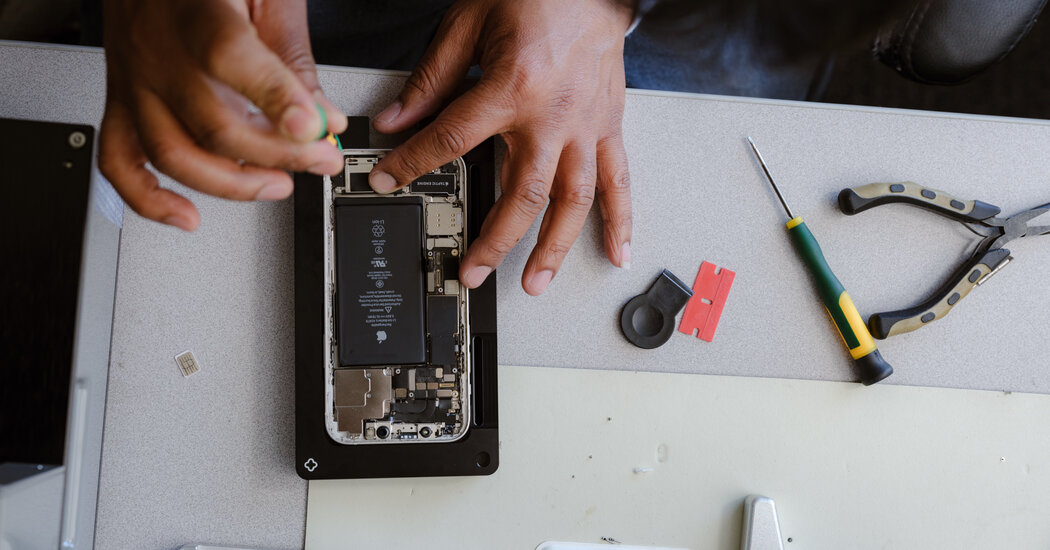
And now, my tale of defeat.
Preparing for repair
I started by visiting Apple’s self-repair program website, selfservicerepair.com. There I found the service manual for the iPhone 12 I wanted to repair and ordered the tools. (Apple’s program currently includes manuals for iPhones released in the last two years.)
I perused the instructions for my iPhone 12, which was working fine but was probably due for a new battery. The steps seemed straightforward enough: Use a machine to melt the glue and pry off the phone’s screen, remove the screws and battery, use another machine to install the new battery, then put everything back together and use a third machine to press together the phone.
I made the charge for the self-repair program to my credit card. It included a $49 rental fee for the tool kit, the $69 battery, $2 for glue and 15 cents for some screws, along with a $1,210 hold for renting the repair machines. After seven days, those tools would have to be shipped back to Apple with a prepaid label, and the old battery could also be traded in for a $24 credit.
With no experience repairing phones, I decided to get some practice. I ordered a $45 kit from iFixit, a site that publishes instructions and sells D.I.Y. tools to repair gadgets, so I could first replace the battery in my wife’s four-year-old iPhone XS.
The iFixit kit arrived with some tweezers, a screwdriver, plastic picks and a suction cup to remove the screen.
The process to pry open my wife’s iPhone, replace the battery and reassemble the device took about five hours over two days. I ran into some snags — the iPhone wouldn’t turn on, which made me think I had destroyed something. It turned out a tiny connector inside the phone was loose. When I pressed it down more firmly with my fingertip, the phone powered up and everything was back to normal.
I was ready for the real thing, I thought.
A shaky start
Days later, a UPS truck pulled up to my driveway. When the delivery man wheeled two bulky containers to my door, he asked what was inside.




